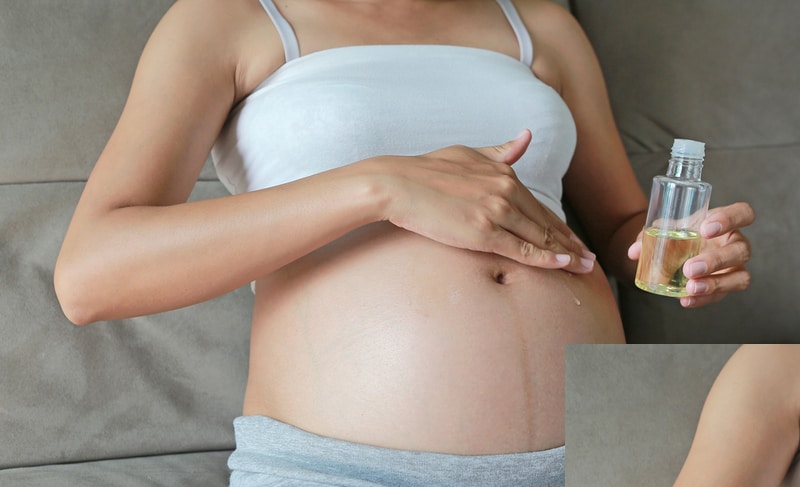Factsheet – Montgomery Tubercles: What are these little bumps?
Written by Alicia Burnett
Midwife, UK
Instagram _aliciaburnett
Twitter ABurnett_RM
Summary
A number of factors influence the establishment of breastfeeding. One factor that receives little attention is the role chemosensory (smell and taste) cues play in the successful initiation of breastfeeding/chestfeeding.1 Named after Irish obstetrician William Fetherstone Montgomery,2 the Montgomery tubercles — sebaceous glands found on the breasts, emit an aroma which attracts new-born infants to their mother’s breasts and entices them to breastfeed. Put simply, your breasts smell delicious to your new baby and the exposure to this scent promoted by skin to skin, being close to you and cuddling, increases the likelihood of a successful start to your breastfeeding journey!
What are Montgomery Tubercles?
Montgomery tubercles are small sebaceous (oil-producing) glands which appear as raised bumps on the areolae (the dark-coloured skin surrounding your nipples). They play important roles during lactation:
- Lubrication: their oily secretions moisten the nipples, protecting them from chaffing and soreness2
- Protection: the oils they produce contain antibacterial substances that protect the nipple and adjacent tissues from infection3
- Encouraging breastfeeding: the oil emits a scent that attracts infants to their parent’s breast/chest.4
The areolae have been described as ‘scent organs’,5 and the scent emitted by the oils produced by montgomery tubercles has the ability to modify infant behaviour in several ways; it stimulates babies to turn their heads towards the breast and crawl towards the nipple when placed upon their mother’s bare chest shortly after birth (an action otherwise known as the ‘breast crawl’).
When will I notice them?
Although present outside of pregnancy, Montgomery tubercles become more prominent around the 12th week of pregnancy.3 The increased prominence of the Montgomery glands is accompanied by other pregnancy related breast changes such as the darkening and enlargement of the areola. The number of Montgomery tubercles present varies across individuals and can range from a few to around 30.2 They should be painless throughout pregnancy and lactation, but if they are inflamed or painful to touch, promptly seek advice from your midwife or doctor.
What should I do about them?
Nothing!
The oils secreted by the Montgomery glands may be milk-like in appearance, which can make it easy to mistake the glands for pimples, however they are a normal part of your breast anatomy and should not be squeezed or picked. If you aren’t experiencing symptoms of infection (fever, inflammation, itching or pain) it is best to leave your Montgomery glands alone, otherwise you risk causing soreness or infection. To protect the function of your Montgomery tubercles and enhance your breast health, wear a breathable nursing bra and avoid washing your breasts with harsh soaps to prevent their protective oils being washed away.5
References
- Doucet S, Soussignan R, Sagot P, Schaal, B. An overlooked aspect of the human breast: Areolar glands in relation with breastfeeding pattern, neonatal weight gain, and the dynamics of lactation. Early Hum. Dev. 2012; 88(2): 119-128. Accessed October 10, 2021. https://doi-org.ezproxy.uwl.ac.uk/10.1016/j.earlhumdev.2011.07.020
- Diaz-Garcia C. Montgomery Tubercles – an early sign of pregnancy? IVI. Published August 19, 2020. Accessed October 11, 2021. https://www.ivi.uk/blog/montgomery-tubercles-sign-of-pregnancy/
- Murray I, Hendley, J. Change and adaptation in pregnancy. In: Marshall JE, Raynor, MD, eds. Myles Textbook for Midwives. 17th Elsevier; 2020: 197-245.
- Entwistle F. Infant feeding and relationship building. In: MacDonald S, Johnson G, eds. Mayes’ Midwifery. 15th Elsevier Health Sciences; 2017: 757-789.
- Schaal B, Doucet S, Sagot P, Hertling E, Soussignan R. Human breast areolae as scent organs: Morphological data and possible involvement in maternal-neonatal coadaptation. Psychobiol. 2006; 48(2):100-110. Accessed October 10, 2021. https://doi.org/10.1002/dev.20122











